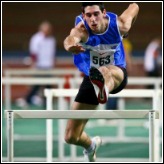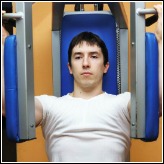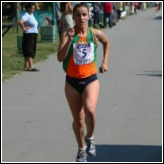Training Methods for Track and Field: Power Events
Research into effective training methods for track and field have reached a point where what works and what doesn’t work are accepted facts. With this knowledge you are able to build better training programs to laser target performance outcomes.
In another article we looked at the training methods for track and field as it affects endurance athletes and their performances. In this, we shall look into the training methods that sprinters and power athletes such as jumpers and throwers use to get a competitive edge.
Let me be very blunt for a moment...
"You can’t do marathon training and expect to become an elite sprinter".
Yes, they are both running events but the training method each uses will make all the difference to the results you get. Any training methods for track and field must target the exact muscle fibers and energy system so that very specific adaptations are made by the body. The difference may only be in the priority placed on the components of fitness, but that will be the difference which makes the difference to your performances.
The right energy system for the right job
The anaerobic energy system provides energy for activities that demand a very high intense energy output. Events like the short sprint, jumping and other power events such as throwing, rely heavily on the anaerobic energy pathway to fuel their activity. Because of the intensity of these activities and there immediacy for energy, the anaerobic system operates and produces energy in a climate where there is no oxygen, hence its name.
So what are the training methods for track and field that power athletes use?
Well, let’s look at some of these training methods for track and field.
Anaerobic training methods
The energy system has two pathways for producing energy for muscle action. The first is called the “alactic” system (does not produce lactic acid as the by product). The alactic system uses creatin phosphate as its fuel source. It is the primary system used by short sprinters, jumpers and throwers in fact any activity lasting up to 10 seconds.
The second anaerobic energy pathway is called the “lactic acid” system (produce lactic acid as the by product of energy production) and uses the rapid breakdown of glycogen for its fuel. 400m and 800m athletes rely heavily on the lactic acid system and to a lesser extent the 200m also.
Repetition training methods
Repetition simply means repeated effort. One of the training principles is refereed to as "overload". You would therefore normally perform more that one repetition in a training session to get an exercise response. By repeating the same training stimulus several times the body learn to adapt and improves.
As an example of how repetition training works, if you have a maximum training volume of 30 (lifts, runs, hops or whatever) rather than attempt to accomplish the whole workout in a single effort (not great for a quality workout). You might divide the volume into smaller bite size chunks of 3 sets of 10 repetitions (much better for quality).
Circuit training methods
Circuit training was originally designed to improve your general fitness (GF). It has since been developed to improve strength endurance (SE) for endurance athletes, and power endurance (PE) for sprinters and jumpers. The basic premise behind circuit training is that you take a number of exercises (6-12) and perform each one after the other until the circuit is completed.
GF circuits are usually performed using body weight. SE and PE circuits are performed using resistance methods. When using resistance it is advised that you should use loads of 30-70% of your 1RM.
Maximum strength training methods
Maximum strength is seen as the highest load that can be lifted in a single attempt. In weight lifting it is normally referred to as your 1RM (repetition maximum). Maximum strength is very important for all power based events as you can’t be powerful unless you are first strong. The training methods for track and field that is used to develop Maximum strength is to train with a load that is 85-100% of your 1RM. 3-6 sets of 1-5 repetitions is suggested for training.
Explosive / Dynamic strength training methods
Explosive / Dynamic strength is strength work that is done explosively. It is done in such a way that there is an acceleration of the extension at the end of the movement. As a consequence, there are a number of ways to achieve this acceleration:
- You can attach rubber bands to lifting bars, which ensure the athlete has to work very hard into full extension
- You can perform a jumping motion at the end of the movement as in “jump squat”
- You can simply work at a very high tempo (through the full range of movement)
Because of the wide variety of exercise modes, loads can vary wildly from 30-85% of your 1RM, but never more than 5 repetitions is performed in a set.
Reactive Strength Methods
Most athletic movements are performed by first lengthening the muscles before it is shortened.
When this lengthening and shortening is performed quickly the subsequent concentric action is more powerful. Between the lengthening and the shortening there is lag time, during the lag energy is lost and the subsequent movement is not as powerful as it might have been.
Reactive strength training improves the body’s ability to lessen the lag time between the lengthening and the shortening phases of muscle contractions. It also teaches the body to use the stored energy which is latent in every action. Activities such as depth jumps, hops and repeated hurdle jumps, collectively called “plyometrics”, are used in this track and field training method.
Flexibility Training Methods
Your range of movement is very important for you to be able to apply great force in a given movement. It also plays an important part in the development of ALL techniques. Where the athlete lacks that range, it must be developed through flexibility training. Although there are many ways in which flexibility can be improved, we will only look at one training method for track and field that is used by many other sports:
- A very effective method for improving your flexibility is called "PNF stretching" (PNF stands for Proprioceptive Neuromuscular Facilitation. This method of flexibility training works by stimulating the stretch reflex nerve in the muscle. This is done by developing isometric force in the joint where the need for range is required. This fools the muscle to relax and as it does so, it is easier to increase the range of that joint.
The following table show how these training methods for track and field apply to power events. Use them wisely, they are powerful.
| Repetition Training | |
|
|
|
|
|
| Anaerobic Training - alactic | |
|
|
|
|
|
| Anaerobic Training - lactic | |
|
|
|
|
|
| Circuit Training - G | |
|
|
|
|
|
| Circuit Training - SE | |
|
|
|
|
|
| Circuit Training - PE | |
|
|
|
|
|
| Maximum Strength | |
|
|
|
|
|
| Explosive / Dynamic Strength | |
|
|
|
|
|
| Reactive Strength | |
|
|
|
|
|
| Flexibility Training (PNF or Static) | |
|
|
|
|
|
Sign Up For The Latest Track And Field News And Improve Your Athletic Performance!
Learn more about Track and Field
From "Training Methods for Track and Field" Back To "Faster, Stronger, Better –
Your Shortcut To Improved Athletic Performance"







